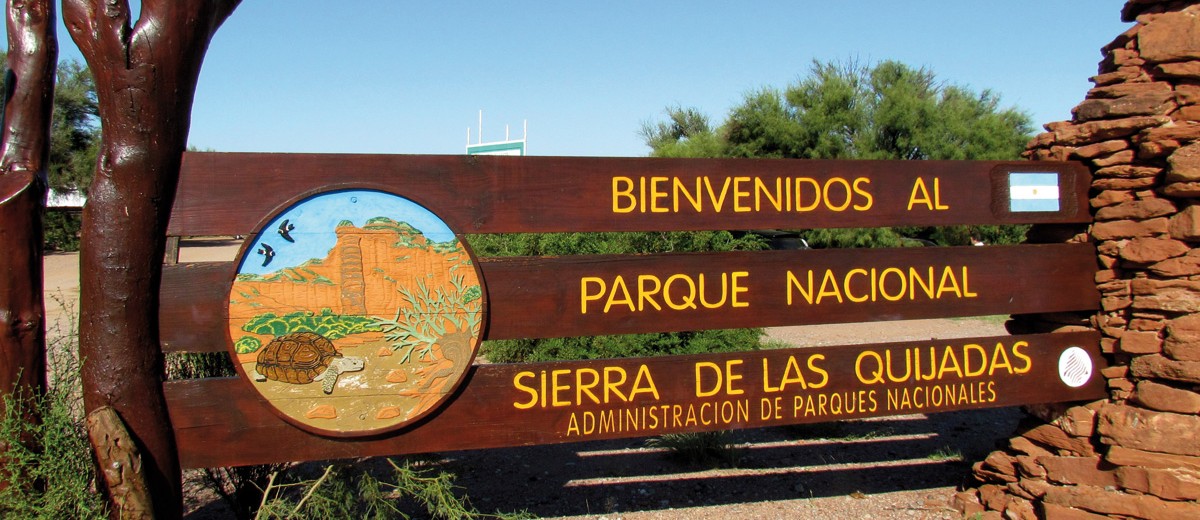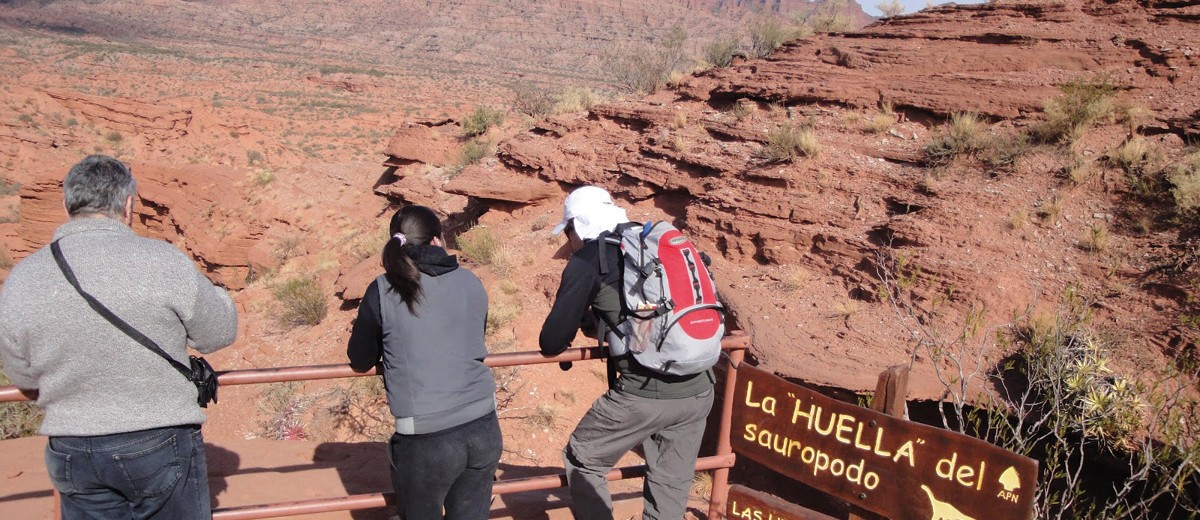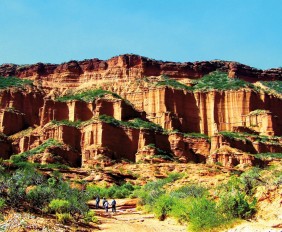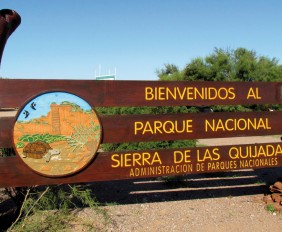National Park Sierra de las Quijadas
It is located in Hualtarán, 116 km from the city of San Juan. It is one of Argentina’s most recently created parks. It was opened in 1991 to preserve paleontological treasures such as huge dinosaur hoofmark, reddish Jurassic and Cretaceous period reddish formations that rose from the ground together with the Andes, and spectacular Potrero de la Aguada, a 4,000-hectare valley surrounded by impressive red-colored cliffs.
The name “quijadas” (jawbone) has a history of its own. In the late 19th century, thieves who used to rob carts going from Buenos Aires to San Juan hid there. After grilling the cows they had stolen, these criminals left the bones scattered all over the place.
A large number of fossils and dinosaur hoofmarks have been found. These hoofmarks correspond to sauropods (lizard-footed dinosaurs), ornithopods (bird-footed dinosaurs), and theropoda. Fossils of a kind of flying reptile that had a peculiar jaw with lots of flexible teeth used to filter the microorganisms it ate were found. Its scientific name is Pterodaustro Guiñazui.
In the National Park Sierra de las Quijadas the scarce vegetation includes jarillas, shrubs, cacti, quebrachos blancos, and other species adapted to the arid soil. As regards the fauna, endangered species such as the jaguarondi, the red vizcacha rat, and the pink fairy armadillo stand out; threatened species such as the wildcat, different foxes, cougars, and guanacos stand out. An exciting bird fauna also lives in the place; some of the species included are peregrine falcons, condors, rheas, yellow cardinals, black-necked swans, and black-collared hawks. All these features make this park an irresistible attraction centre for those who love nature and life.
National Park Sierra de las Quijadas Tour
The first thing visitors will see is a series of 23 ovens used by The Huarpes to fire pottery centuries ago. This tribe disappeared in the 18th century.
A visit to Potrero de la Aguada valley is the tour climax. This site is a natural viewpoint situated opposite a huge land depression surrounded by the vertical rocky outcrops of a great reddish wall. This large basin shaped 120 million years ago features an uneven ground bordered by 250-m cliffs. It is a rain and wind-shaped maze packed with caves, dead-ends, and winding dried streams.
One of the most amazing spots in the park is a cliff edge where a huge dinosaur hoofmark can be seen. The sight of it is truly impressive, as it is not a blurred hoofmark but a perfectly defined 5-cm mold.
Just as if the dinosaur had stepped on this spot the day before, visitors will see the three hooves of a long-tailed lizar-footed dinosaur, which was the area’s largest herbivorous four-legged dinosaur. Scientist call this phenomena “ignita”: it is a hoofmark whose petrified condition has protected it from the effects of time and rain.
Esta entrada también está disponible en: Spanish Portuguese (Brazil)










¿Qué te pareció la publicación?